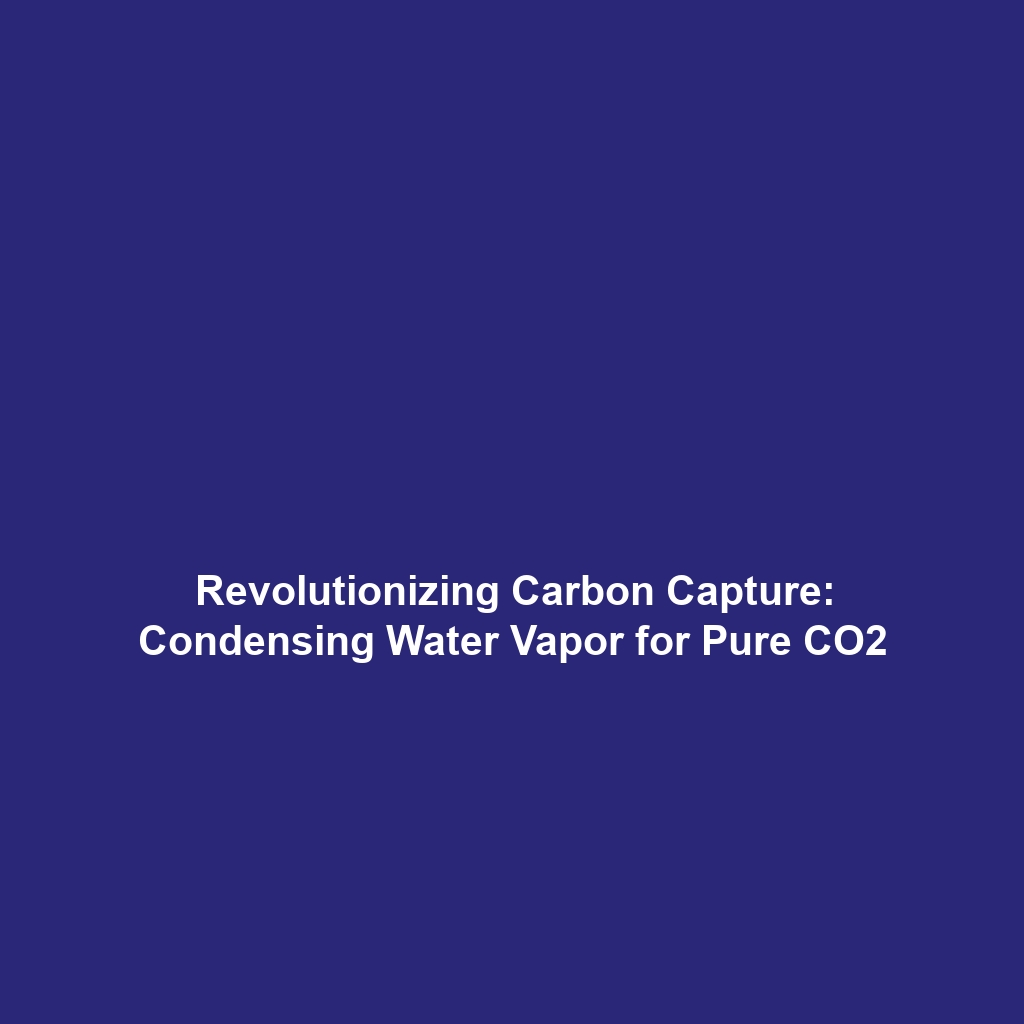The U.S. Provides Tax Credits for CCS under the 45Q Program
In an effort to combat climate change, the United States has introduced the 45Q tax credit program, which incentivizes the capture and storage of carbon dioxide (CO2). This initiative is a crucial component of the broader strategy for Carbon Capture & Storage (CCS). By offering financial rewards, the 45Q program encourages industries to adopt technologies that reduce greenhouse gas emissions, playing a significant role in a sustainable energy future.
Key Concepts of the 45Q Tax Credit Program
The 45Q program facilitates the development of CCS technologies by providing substantial tax credits for the capture of CO2 emissions from industrial sources and power plants. Here are key concepts related to this initiative:
- Tax Incentives: Up to $50 per metric ton of captured CO2 for geologic storage and $35 for utilization.
- Eligibility: The program is applicable to various industries, including energy production, manufacturing, and waste management.
- Environmental Impact: CCS is pivotal for reducing carbon footprints and achieving greenhouse gas reduction goals.
Applications and Real-World Uses of the 45Q Program
The 45Q tax credits have catalyzed real-world applications of CCS technologies across several sectors:
- Energy Sector: Power plants adopt CCS to mitigate their emissions while maintaining energy generation.
- Industrial Processes: Industries like cement and steel production utilize CCS to capture emissions generated from manufacturing.
- Natural Gas Processing: Facilities capture CO2 and reinject it for enhanced oil recovery (EOR).
Current Challenges in Implementing the 45Q Program
Despite its promising outlook, the 45Q tax credit program faces several challenges:
- Limited public awareness and understanding of CCS technologies.
- High upfront capital costs associated with retrofitting facilities.
- Regulatory hurdles and uncertainty surrounding long-term liability for stored CO2.
Future Research and Innovations in CCS
The future of the 45Q program and its impact on Carbon Capture & Storage is promising, with ongoing research focusing on:
- Advanced Capture Technologies: Development of more efficient processes to capture a higher percentage of CO2 emissions.
- Utilization Innovations: Expanding uses of captured CO2 in various products, from fuels to construction materials.
- Monitoring Techniques: Enhanced methods for tracking storage sites and ensuring the safe long-term containment of CO2.
Conclusion
The 45Q tax credit program represents a significant advancement in the United States’ efforts toward Carbon Capture & Storage (CCS). By providing financial incentives for CO2 capture, it plays an essential role in reducing carbon emissions. As research continues to evolve and new technologies are developed, the 45Q program holds the potential to drive innovation and foster a more sustainable future.
For further insights into CCS and ongoing developments in environmental policies, explore our articles on CCS Infrastructure and Renewable Energy Initiatives.

